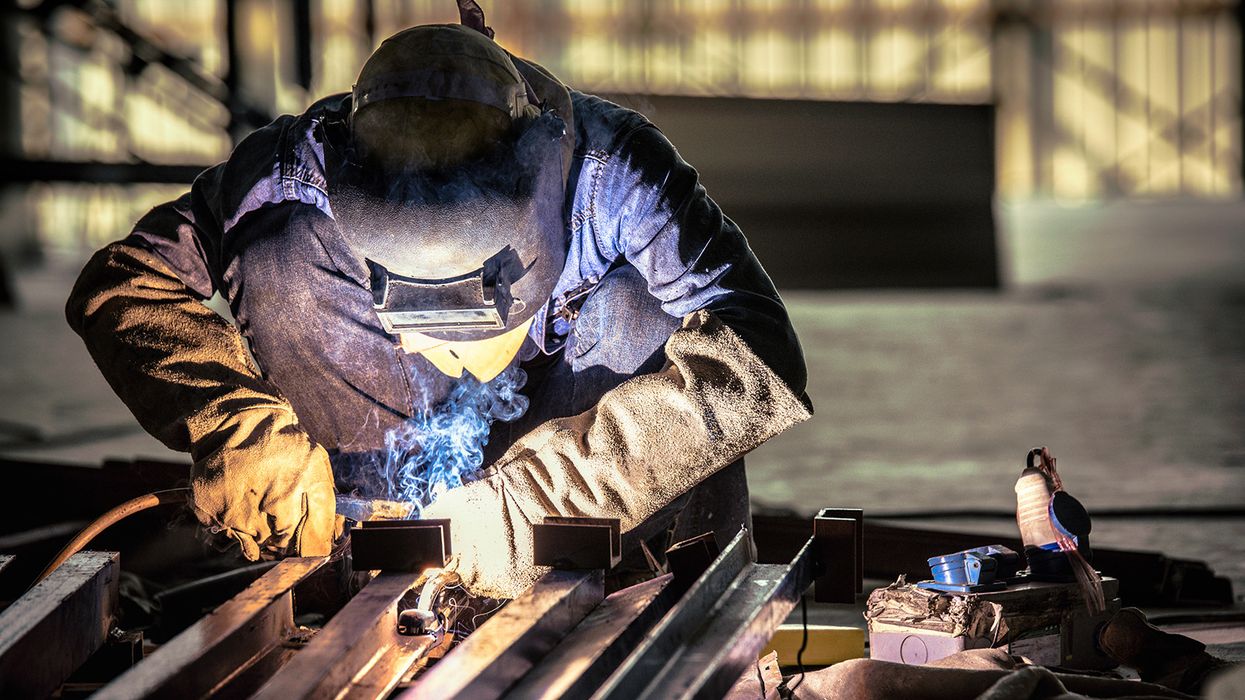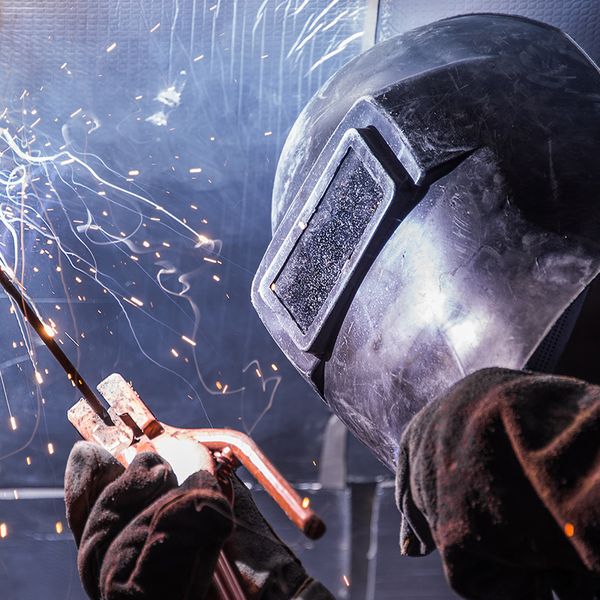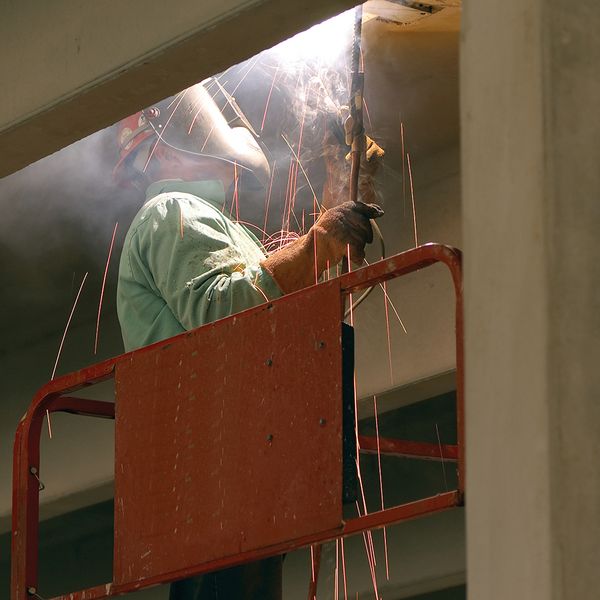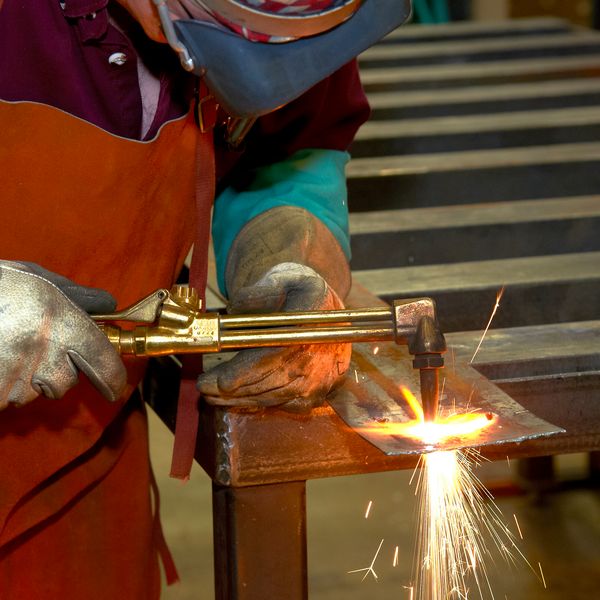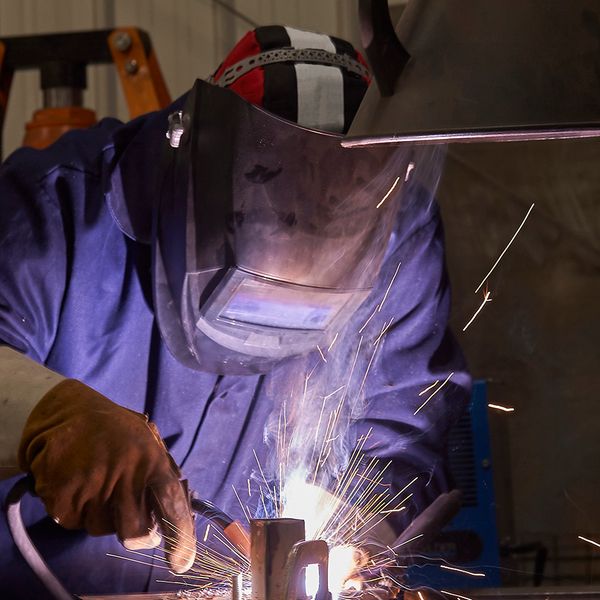When welding, the goal is to not burn the workplace down
Whenever welding, cutting, or brazing operations are going on, everyone involved must take precautions to prevent fires, explosions, or personal injuries from exposure to toxic fumes, heat, and bright flames/arcs. There are three basic types of welding operations:
- Oxygen–fuel gas welding joins metal parts by generating extremely high heat during combustion.
- Resistance welding joins metals by generating heat through resistance created to the flow of electric current.
- Arc welding joins or cuts metal parts by heat generated from an electric arc that extends between the welding electrode and the electrode placed on the equipment being welded.
Welding safety program guidelines
A good way to set up your safety program is to incorporate relevant elements from your company-welding plan. Typical elements to address could include:
- Person responsible for safety in welding operations.
- Job hazard assessment for welding operations. Common hazards include health hazards from fumes and gases, radiation hazards, fire hazards, noise hazards from some equipment, and electrical hazards.
- Special procedures for equipment used, such as care of cylinders for oxy/fuel welding, ventilation systems set up for welding operations, fire prevention methods including fire watches, and making sure that manufacturer instructions are followed.
- Engineering controls (shields for welding areas, space from combustibles, etc.)
- Personal protective equipment.
Welding hazards
Welding hazards vary, depending on the facility, equipment, number of workers present, and the job at hand. Be aware of the dangers specific to your welding operations: Some examples are:
- Damage to eyes and skin from continued or repeated exposure to ultraviolet and infrared rays produced by electric arcs and gas flames.
- Toxic gases, fumes, and dust that may be released during welding and cutting operations.
- Fire hazards from welding or cutting near or on combustible or flammable materials, dust, vapor, liquid or floors (use proper fire protection, issue hot-work permits for work in hazardous areas).
- Explosion hazards (from dust, fumes, gases, vapors — adequately ventilate the work area).
Housekeeping and safe work practices
Here are a few practices for working safely. Keep:
- Floors clean by putting electrode or rod stubs in an appropriate container.
- Floors clear of tripping hazards and store tools safely.
- Welding areas free of combustibles.
Proper storage of compressed gas cylinders is also an element of fire prevention.
Fire watch
Your company must designate an employee as a fire watch during welding or cutting operations. Fire watchers will:
- Have fire-extinguishing equipment readily available and be trained in its use.
- Watch for fires in all exposed areas.
- Try to extinguish fires only when obviously within the capacity of the equipment available, or otherwise sound the alarm.
| Interested in learning more about hot work and fire watch? See our article in Compliance Network titled, “Hot Work Handout: Don’t let hot work incidents burn your safety program.” |
Key to remember
Welding, cutting, and brazing are common procedures in many industries. Whenever welding, cutting, or brazing occurs, everyone involved in the operation must take precautions to prevent fires, explosions, or personal injuries.

